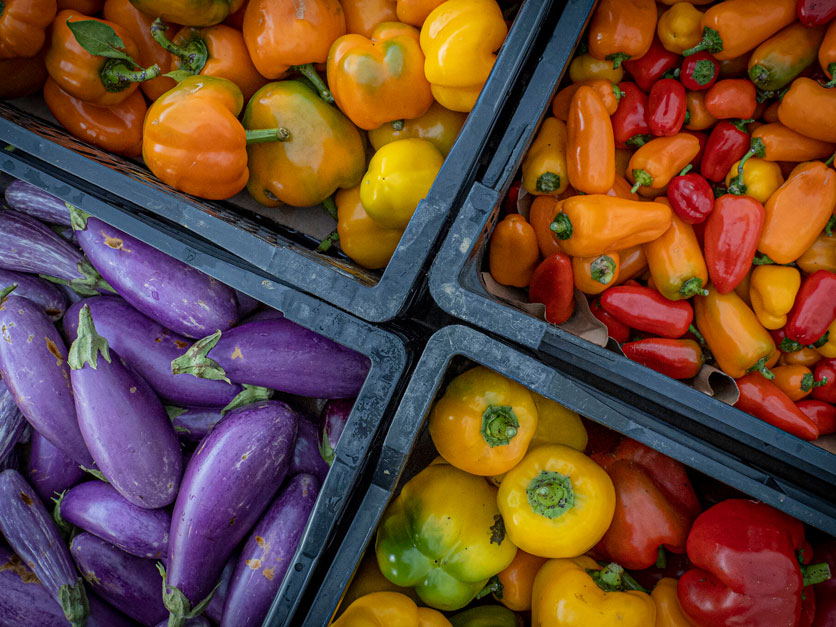Oregon grows more than 225 different crops, and many representatives of the diverse agricultural state testified on farm bill priorities Friday in Albany, Oregon, in front of House Agriculture Committee members including Chairman Glenn Thompson and Oregon Reps. Lori Chavez-DeRemer and Andrea Salinas. California Reps. David Valadao and Doug LaMalfa were also in attendance.
Amanda Staehely, president elect of the Oregon Association of Nurseries and owner of Columbia Nursery, said in the past 18 months the nursery industry faced unprecedented smoke damage from forest fires, devastating ice storms and blistering summers. “The current farm bill does not work well for specialty crop growers such as nurseries, and disaster relief funds are substandard in reach and funding,” Staehely said.
Oregon Farm Bureau President Angela Bailey, who owns a nursery specializing in Japanese maples, shared that specialty crop growers believe that risk management tools for non-traditional crops can be enhanced and updated. Bailey also said, “Conservation programs should remain voluntary and climate change cannot be used to mandate conservation practices.”
US cotton exporters get big break in Bangladesh
Bangladesh, a country that relies heavily on imported cotton to keep its status as the world’s second largest garment exporter, has removed a significant barrier to U.S. cotton, according to USDA’s Animal and Plant Health Inspection Service.
Bangladesh has agreed to lift its requirement that baled cotton from the U.S. be fumigated on arrival, opening up the opportunity for more trade, says APHIS.
“Removing the fumigation requirement is the result of decades of hard work by USDA and the U.S. cotton industry,” the USDA agency said. “This important U.S. export market was valued at more than $475 million last year and has the potential to increase with this removal of the fumigation trade barrier.”
U.S. cotton can now avoid fumigation if it arrives with a a phytosanitary certificate and a declaration that it’s free from boll weevil.
China and Mexico drive corn trade in latest weekly data
Big purchases from Chinese and Mexican customers were the primary factors in U.S. corn exports for the week of May 9-15, according to the latest weekly trade data out of USDA’s Foreign Agricultural Service.
The U.S. exported about 1.4 million metric tons of corn for the week, with 465,800 tons going to China and 280,900 going to Mexico, says FAS. Japan, Saudi Arabia and South Korea were also big destinations.
Cover crop insurance bill seen as just the start
Rep. Sean Casten, D-Ill., says he sees the bill that would provide a $5-per-acre insurance premium subsidy to farmers who plant cover crops as a starting point for future policies aimed at encouraging farmers to sequester carbon.
Casten, one of the co-sponsors of the COVER Act, told Agri-Pulse Friday that while the $5-per-acre payment is currently a "pretty small" fraction of farmers’ overall costs per acre, programs in Illinois and other Midwestern states demonstrate that it is a sufficient payment to “push a lot of people over the edge.”
Casten also said he knows it may not be the right program for people in drier climates or double-cropping areas, but says he is open to adjustments in the future.
“All of that suggests to me that over the long term, we should really adjust and tweak this program,” Casten said.
Take note: Casten said he, Elissa Slotkin, D-Mich., and Mike Bost, R-Ill., are aiming to include the COVER Act in the upcoming farm bill. Sen. Sherrod Brown, D-Ohio, has introduced a companion bill in the Senate.
Waterhemp resistant to dicamba confirmed in N.D.
Dicamba-resistant waterhemp has been confirmed in North Dakota for the first time, according to a North Dakota State University Extension weed specialist.
Don’t miss a beat! It’s easy to sign up for a FREE month of Agri-Pulse news! For the latest on what’s happening in Washington, D.C. and around the country in agriculture, just click here.
“For about four years we’ve had concerns, but as of the 2022 field season, we have dicamba resistance we have to contend with,” Joe Ikley told AgUpdate’s Farm & Ranch Guide.
“It’s a weed that produces a lot of seed, and with the issues we’re seeing with herbicide resistance, it’s becoming more challenging and difficult in crops like soybeans, dry edible beans, and sugarbeets, to keep those fields free of waterhemp throughout the growing season,” Ikley said.
Istanbul standstill at heart of Ukraine grain gridlock
Ukrainian grain exports remained at a standstill Friday, and the reason for the halt in trade lies with the Istanbul-based Joint Coordination Center, according to the United Nations. The JCC – made up of Russian, Ukrainian, Turkish and UN officials – is responsible for inspecting ships entering and leaving the Black Sea, but they are not doing their jobs.
The JCC, according to a UN spokesman Friday, “was not able to conduct inspections yesterday or today. The parties could not reach consensus on the vessels to be inspected. At present, there are 29 vessels in the system, including 20 in the Ukrainian ports, four in transit, and five in the inspection areas.”
Thirty-three vessels left Ukrainian ports with ag commodities in May, shipping just 1.3 million tons, according to the UN. That’s about half of what was shipped in April.
“All of the actions of the (JCC) are taken by consensus,” the spokesman said. “So, if consensus cannot be reached for any reason, that holds up our activity.”
Questions, comments, tips? Email bill@agri-pulse.com





